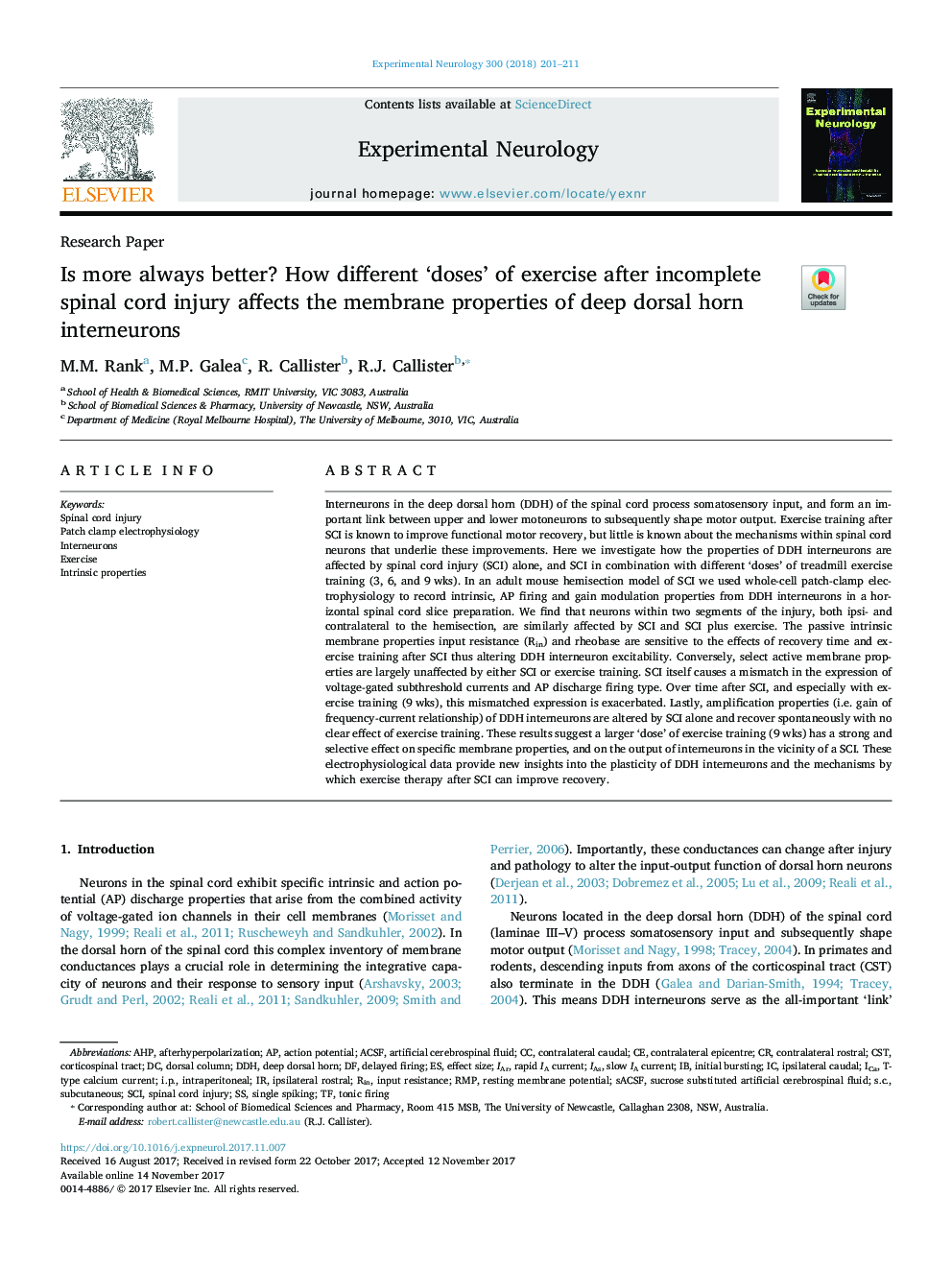| Article ID | Journal | Published Year | Pages | File Type |
|---|---|---|---|---|
| 8684741 | Experimental Neurology | 2018 | 11 Pages |
Abstract
Interneurons in the deep dorsal horn (DDH) of the spinal cord process somatosensory input, and form an important link between upper and lower motoneurons to subsequently shape motor output. Exercise training after SCI is known to improve functional motor recovery, but little is known about the mechanisms within spinal cord neurons that underlie these improvements. Here we investigate how the properties of DDH interneurons are affected by spinal cord injury (SCI) alone, and SCI in combination with different 'doses' of treadmill exercise training (3, 6, and 9Â wks). In an adult mouse hemisection model of SCI we used whole-cell patch-clamp electrophysiology to record intrinsic, AP firing and gain modulation properties from DDH interneurons in a horizontal spinal cord slice preparation. We find that neurons within two segments of the injury, both ipsi- and contralateral to the hemisection, are similarly affected by SCI and SCI plus exercise. The passive intrinsic membrane properties input resistance (Rin) and rheobase are sensitive to the effects of recovery time and exercise training after SCI thus altering DDH interneuron excitability. Conversely, select active membrane properties are largely unaffected by either SCI or exercise training. SCI itself causes a mismatch in the expression of voltage-gated subthreshold currents and AP discharge firing type. Over time after SCI, and especially with exercise training (9Â wks), this mismatched expression is exacerbated. Lastly, amplification properties (i.e. gain of frequency-current relationship) of DDH interneurons are altered by SCI alone and recover spontaneously with no clear effect of exercise training. These results suggest a larger 'dose' of exercise training (9Â wks) has a strong and selective effect on specific membrane properties, and on the output of interneurons in the vicinity of a SCI. These electrophysiological data provide new insights into the plasticity of DDH interneurons and the mechanisms by which exercise therapy after SCI can improve recovery.
Keywords
Related Topics
Life Sciences
Neuroscience
Neurology
Authors
M.M. Rank, M.P. Galea, R. Callister, R.J. Callister,
